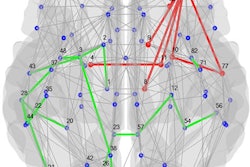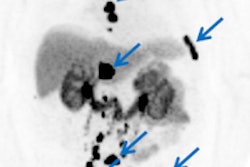
Diffusion-tensor MR tractography may be a reliable quantitative imaging biomarker for assessing prostate cancer treatment response to androgen deprivation and radiation therapy.
That conclusion comes from researchers at Brigham and Women's Hospital and Massachusetts General Hospital (MGH), who presented their findings this week at the American Roentgen Ray Society (ARRS) meeting in Toronto.
The group found that quantitative evaluation with MR tractography showed higher tract densities after androgen deprivation and radiation therapy, reflecting gland shrinkage and subsequent fibrosis. For the preliminary study, 22 patients with elevated prostate-specific antigen and biopsy-proven prostate carcinoma underwent 1.5-tesla MRI scans with an endorectal coil.
The patients were divided into two groups: One was treated with androgen deprivation, radiation therapy, or both (11 patients), while a second group did not receive either therapy, serving as a control (11 patients).
Three-dimensional fiber tracts were generated from the diffusion-weighted images using commercially available Diffusion Toolkit and TrackVis software from MGH. The researchers drew 3D regions of interest (ROIs) over the tumor and healthy prostatic parenchyma in both of the groups to record the tract number and density, which was rendered as a normalized measure of the number of tracts passing through the 3D ROI. The values within each group were then compared.
The mean tract density in the tumor region and normal parenchyma was 2.25 and 3.34 in the study group, respectively, compared with 1.64 and 2.74 in the control group, the researchers found.
The difference between these values was statistically significant for the control group (p = 0.0018) but not for the study group (p = 0.11). In addition, the difference between the tract numbers of tumor and normal parenchyma appeared to narrow after therapy (93.82 in the control group, compared with 53.64 in the study group).
Diffusion-tensor MR tractography could function as a novel quantitative tool and marker of treatment response, the researchers concluded. "For example, absence of rise in tract density after therapy and persistent or wider gradient can signify poor response," noted study co-author Dr. Jennifer Uyeda in a statement.



.fFmgij6Hin.png?auto=compress%2Cformat&fit=crop&h=100&q=70&w=100)




.fFmgij6Hin.png?auto=compress%2Cformat&fit=crop&h=167&q=70&w=250)











